Posts Tagged: pumpkin
Hey There, Pumpkin! Prey Tell, Is That a Praying Mantis?
Hey there, pumpkin! Prey tell, is that a praying mantis stalking a bee? Well, if your name is Allan Jones of Davis, Calif., and you...
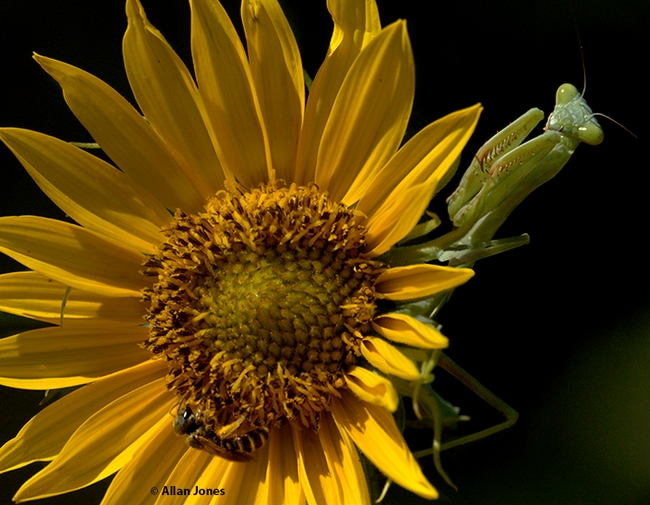
A praying mantis "shopping for bees" on a sunflower, became the subject of one of Allan Jones' carved pumpkins. (Photo by Allan Jones)
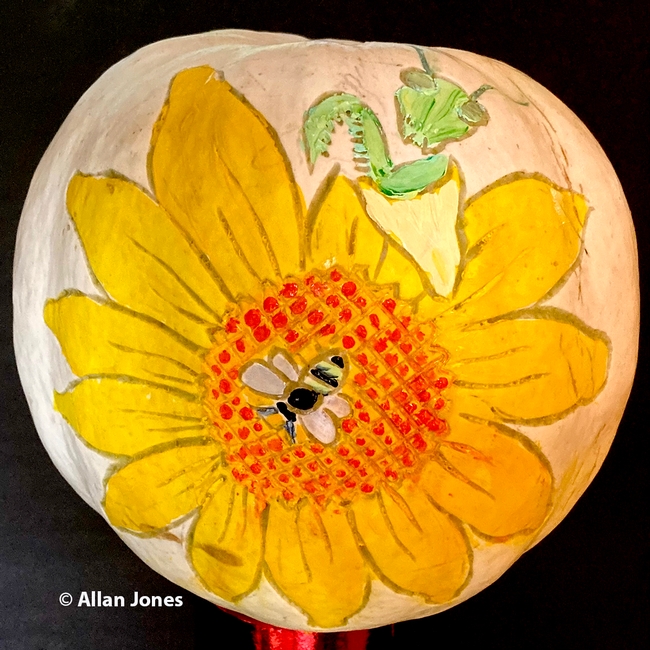
The mantis-and-bee image that Allan Jones captured became a fanciful pumpkin. (Photo by Allan Jones)
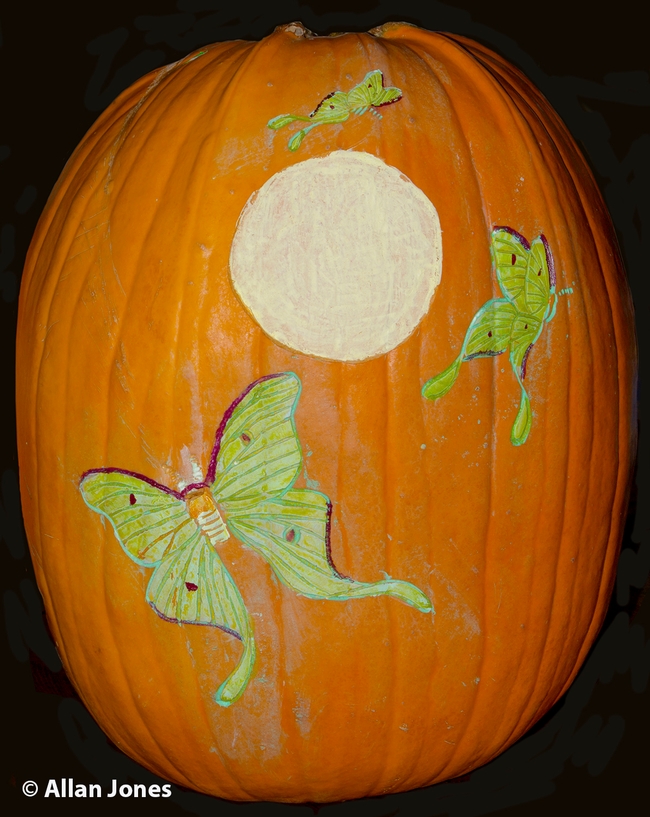
Images of a luna moth, Actias luna, found a home on one of Allan Jones' pumpkins. (Photo by Allan Jones)
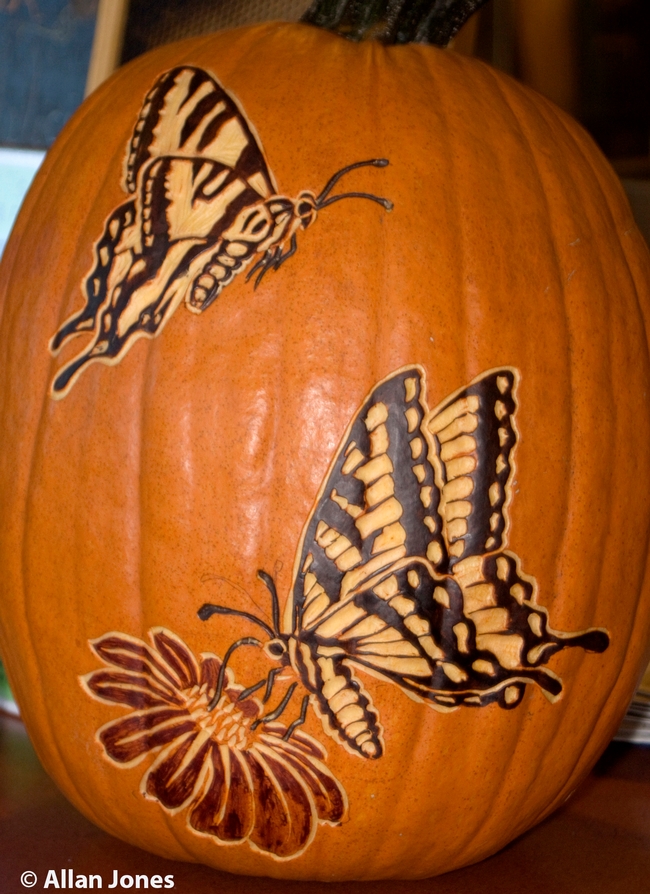
Allan Jones depicted the colorful Western tiger swallowtails, Papilio rutulus, on this pumpkin. (Photo by Allan Jones)
Thank the Squash Bee on Thanksgiving
If you're having pumpkin pie or butternut squash this Thanksgiving, thank the squash bee. Squash bees are specialists (not generalists) that...
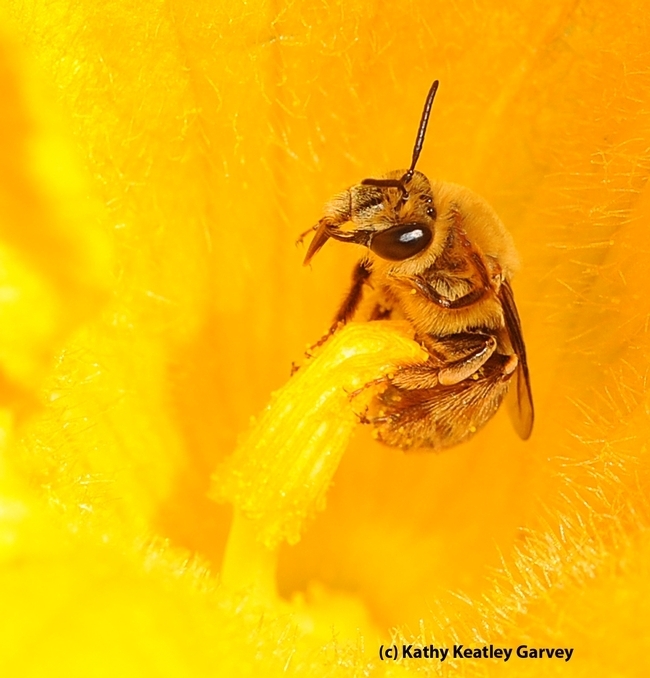
A squash bee, Peponapis pruinosa, pollinating a squash blossom. (Photo by Kathy Keatley Garvey)
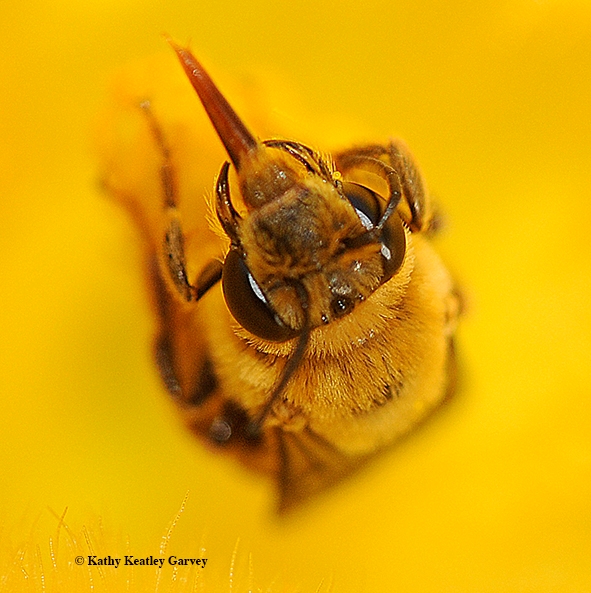
Close-up of a squash bee,Peponapis pruinosa. (Photo by Kathy Keatley Garvey)
Happy National Squash Bee Day!
In case you missed it, today was National Pumpkin Day. But it ought to be National Squash Bee Day, because the squash bee (my favorite species is...
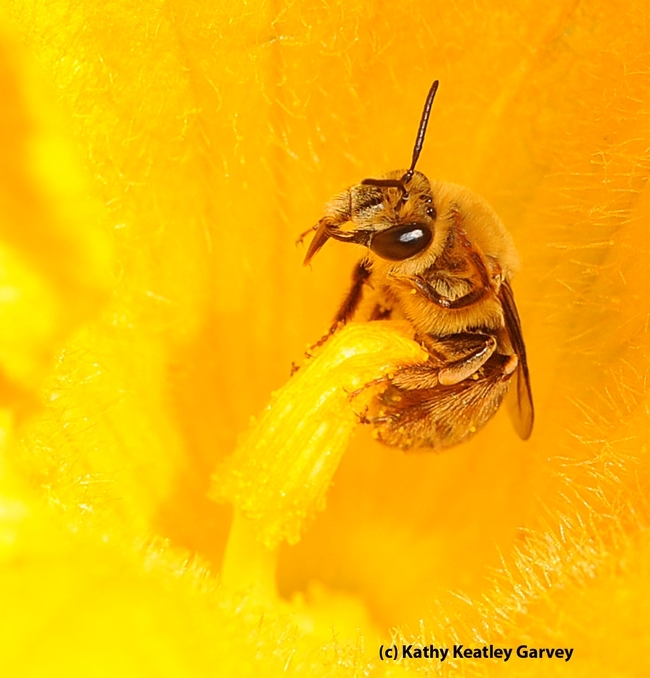
Squash bee, Peponapis pruinosa, inside a squash blossom. (Photo by Kathy Keatley Garvey)
Fusarium Crown and Foot Rot of Squash and Pumpkin Fusarium solani f. sp. cucurbitae Race 1
This post was generated in response to a case of Fusarium crown and foot rot in Sacramento County on 'Lumina' pumpkins. SYMPTOMS The...
No Cinderella Tale Here
I have never aspired to grow a giant pumpkin like those celebrated in Half Moon Bay, but I thought it would be fun to grow a few small pumpkins of our own for the children to decorate. For the past two seasons, I’ve experimented with different varieties in different locations, focusing on the very small varieties such as ‘Small Sugar’ and ‘Jack Be Little’ with extremely limited success. I’ve tried planting them in the limited, and thus precious, space of my small raised bed, tucked in out-of-the-way (yet well composted) areas of the yard, and in containers. I even tried growing mini pumpkins vertically, which really wasn’t very successful (although two minis are better than none, I suppose). The larger pumpkin vines have eked out a pumpkin or two, but really haven’t produced very well.
So this year, while I couldn’t give up entirely, I didn’t try very hard. I threw a few leftover seeds into a garden box next to my deck and promptly forgot about it until my husband asked one day, “Did you really plant a pumpkin THERE?”
Yes, indeed, we had a happy, healthy pumpkin vine growing in a small box with limited soil--it must have appreciated the full sun and regular water in that location because there wasn’t much else to live on. I can’t quite recall what seeds I threw down, but I believe it is ‘Rouge vif d'Etampes,’ also known as the ‘Cinderella’ pumpkin because its shape resembles the fairy tale coach. It is an heirloom pumpkin with beautiful deep orange-red skin. Although we lost the use of part of our deck for a few months, gingerly walking around the vines, it was worth it to watch one pumpkin grow to full size and to anticipate several others that were close to maturity.
But then pumpkin tragedy struck. All of a sudden, in mid-September, hordes of whiteflies descended. Whiteflies are small insects that are usually found on the underside of leaves in large numbers. If disturbed, clouds of them will arise from the plant. Two types of whiteflies infest cucurbits (the plant family that includes pumpkins and squash)—the greenhouse whitefly and the silverleaf whitefly. The silverleaf whitefly is relatively new to California, but it is a serious pest and has the potential to cause considerable damage to cucurbits. Feeding on the plants causes their leaves to turn whitish or silver, hence the name silverleaf whitefly. More information about whiteflies and cucurbits can be found on the UC Integrated Pest Management website at http://www.ipm.ucdavis.edu/PMG/r116301211.html.
Given that I didn’t anticipate my pumpkin plant would grow, much less be infested by whiteflies, I obviously didn’t plan for any cultural controls and I don’t care to use most sprays (mostly due to laziness). Insecticidal soap is a treatment option, but it requires frequent applications and full coverage when spraying. I simply don’t have the time or the patience to spray the underside of each leaf of a sprawling pumpkin vine multiple times. We harvested our one large pumpkin, cut the vines without small pumpkins in the hopes of reducing the whiteflies’ feeding area, sprayed the plant once, and cross our fingers that this would control the pests long enough to harvest a few more pumpkins.
But alas, clouds of whiteflies are not the company you want to keep when relaxing on a backyard deck, so I ultimately harvested one more pumpkin and hauled the infested vines to the trash. I didn’t even dare compost them since they were so infested. The harvested pumpkins are now developing dark spots – I keep telling myself that it is natural variability in their coloration, but I am a little worried that somehow the whiteflies have caused the pumpkins to rot. Time will tell. No fairy tale ending here for our ‘Cinderella’ pumpkins, but we did enjoy the story while it lasted.
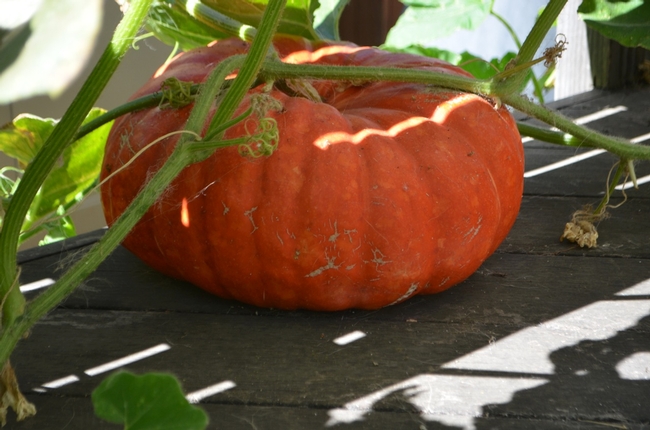
Rouge vif d'Etampes pumpkin. (photos by Erin Mahaney)
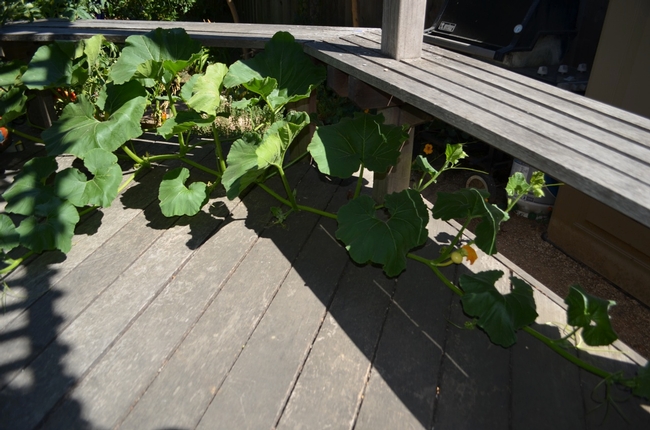
Vine taking over the deck.
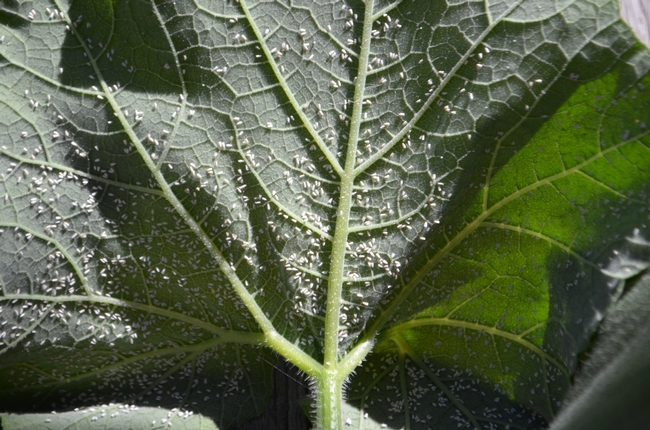
Whitefly on underside of pumpkin leaf.

